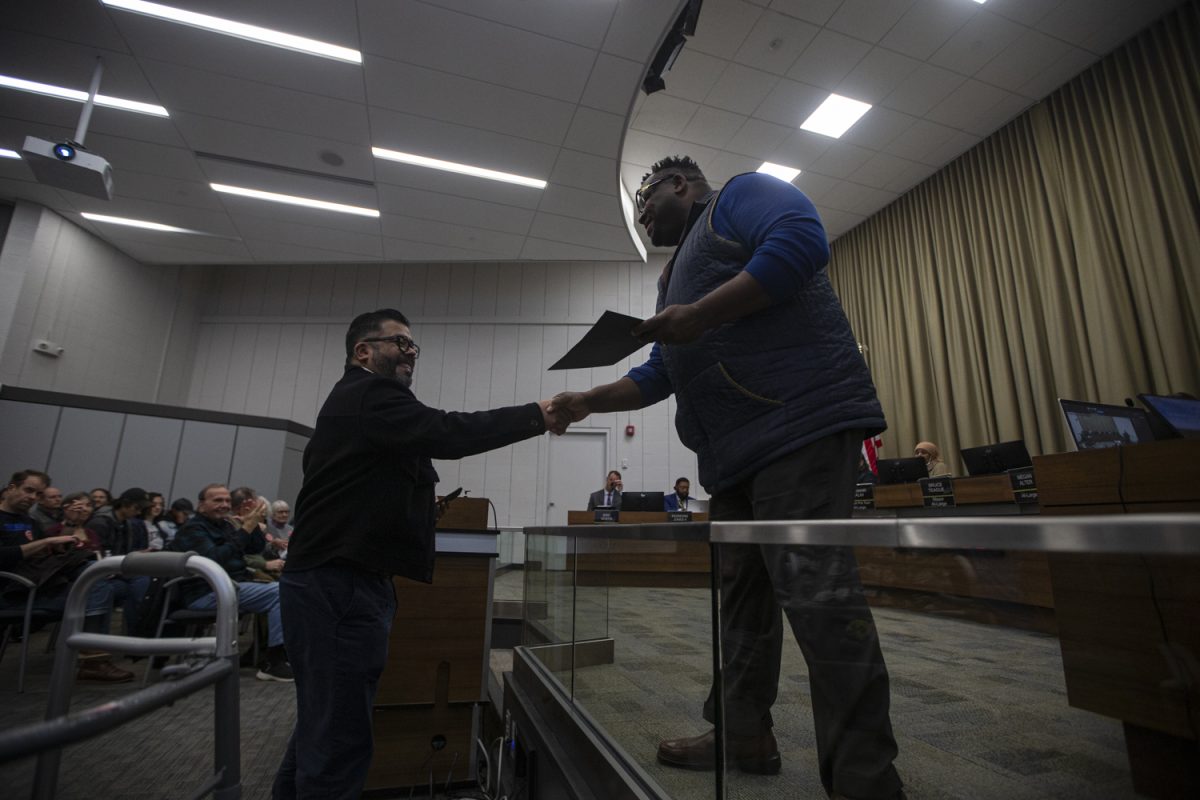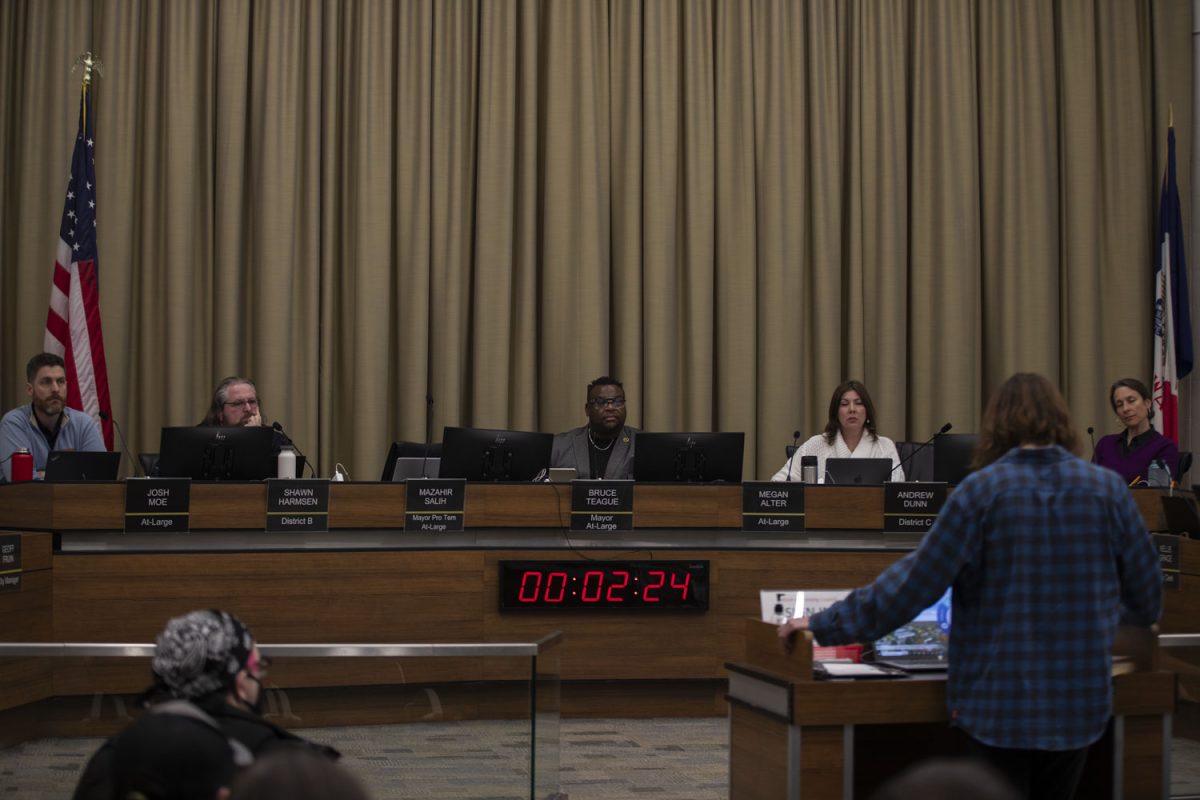Having grown up on a farm, Steve Swenka, the owner of Double G Angus Farm just outside of Tiffin, Iowa, said minor injuries like cuts, scratches, and bruises are a weekly occurrence.
Swenka said two major injuries he has sustained include breaking his ribs and hand. However, Swenka laughed as he recalled losing his finger after it was caught in a sickle mower.
Swenka said the story sounds worse than he thought it was, and he was able to recover the finger, have it reattached, and overcome the injury.
“A farm can be a dangerous place, but it doesn’t have to be. It’s all about preparing ourselves and identifying pitfalls,” Swenka said. “It’s just all about trying to be proactive, to keep yourself safe.”
On farms across Iowa, one of the greatest concerns farmers face daily is the risk of injury.
In 2021, the private agriculture, forestry, fishing, and hunting industry sector saw the second-highest number of fatal workplace injuries in Iowa, according to the most recent data available from the U.S. Bureau of Labor Statistics.
The report showed 11 fatal workplace injuries in Iowa’s private agriculture sector in 2021, the number remaining unchanged from 2020. Forty-one fatalities occurred in Iowa’s agriculture, forestry, fishing, and hunting sectors from 2019 through 2021, with a large volume of transportation incidents.
Approximately 1,500 Iowans were sickened or injured in agriculture sector incidents in the same amount of time, as reported by the bureau.
Tabitha Kuehn, outreach coordinator of Iowa’s Center for Agricultural Safety and Health, said tractor rollovers and grain entrapment — in which a person becomes buried in grain — are the leading cause of fatalities in Iowa’s agriculture industry.
Great Plain Center for Agricultural Health reported that it takes only 20 seconds for an adult to become fully buried and stated that most entrapment victims don’t survive.
A Purdue University study reported 24 deaths in agricultural confined spaces, such as grain and feed storage facilities or silos, in 2022. These cases included those related to fires and explosions. Iowa also had nine grain entrapment cases in 2022, more than any other state.
Kuehn said harvest and planting season creates a higher risk for farm equipment accidents as farmers travel from field to field. Kuehn said this is a “two-way street,” as farmers must use proper lighting and markings and drivers must be patient and careful while on the road with the heavy machinery.
“I feel like everybody knows someone who’s had some agricultural injury or close call or something in these Midwest states,” Kuehn said. “Farming is such a cultural part of the identity — you still don’t think about how scary it can be.”
Dan Neenan, director of the National Education Center for Agricultural Safety, said family farms, which make up the majority of farms in the Midwest, are exempt from the Occupational Safety Health Administration’s rules. Neenan said this plays a part in the number of injuries and fatalities that occur on Iowa farms.
The 2017 USDA Census, the most recently published census, reported that more than 90 percent of Iowa farms are owned by families. Andrew Wheeler, public relations manager of the Iowa Farm Bureau, said the percentage of family farms remains within the same range over the years.
Farmers are “no spring chicken”
West of Ames, organic corn and soybean farmer George Naylor, 75, continues to encounter dangers on the job as he finishes his 47th harvest. Naylor’s close friend died about 10 years ago in a farming accident, and he has experienced several injuries himself.
Naylor’s friend and neighbor, Wayne King, was killed while trying to hitch a truck to a fertilizer tank. King was pinned between the two pieces of machinery and suffered fatal injuries.
Naylor said his friend’s accident and other farming fatalities are avoidable. He said farming has become safer over the years, especially when compared to when he was a farm kid in the 1950s.
However, Naylor himself has endured several injuries, including falling off of a mower and narrowly avoiding being run over, falling off of a ladder, and fracturing two of his vertebrae five years ago. He received an operation for the back injury just this past July.
“When you’re tired or stressed out, that’s the worst time,” Naylor said. “You’re worrying about things or you’re thinking ahead, and you don’t have your mind on every little detail, on what you’re doing. That can be not good.”
On the other side of the industry, Karley Larson manages Larson Valley Farms, a feedlot in Underwood, Iowa. Larson manages 330 cow-calf pairs as well as roughly 1,000 head of cattle in the feedlot.
Larson said being around livestock and the large animal’s often unpredictable behavior can easily lead to injury, especially if someone isn’t accustomed to dealing with cattle.
Larson said she has not been severely injured but has endured her fair share of “bumps and bruises.” To avoid injury, Larson, family, and her employees make a plan before dealing with animals.
“At our farm, we just make sure that everyone kind of knows what they’re doing before we go into situations and kind of list everyone’s roles,” Larson said. “That way, there’s nothing that stuns us in the moment. Because when we’re working with cattle, if someone’s not in the right place at the right time, that’s normally when it happens.”










